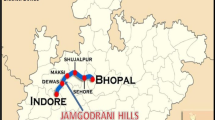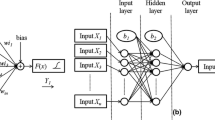Abstract
Although there are many locations suitable to construct new wind turbines, wind speeds in those areas are not always available, which makes it difficult to plan and develop a proper wind energy conversion system. This paper proposes an approach to determine the wind speeds corresponding to locations without any past wind speed data. First, monthly mean wind speed was modeled as a function of geographical variables (latitude, longitude and elevation), atmospheric variables (ambient temperature, atmospheric pressure, percent relative humidity), and the month of the year for a case location (Aegean Region of Turkey) by artificial neural networks (ANNs) trained by the data supplied by 55 wind speed measuring stations throughout the region (660 data points). Then, the prediction ability of the ANN model was tested: The wind speed data of each station was excluded from the database, and an ANN model trained by the data of the rest of the wind stations was used to forecast the excluded data. Finally, a grid search algorithm was applied to the entire region to search for the optimum location for the maximum average annual wind speed which was found to be 10.6 m/s. A generic wind turbine was considered at this location and a power of 1.79 MW was achieved.







Similar content being viewed by others
References
GWEC (2016) Global Wind Energy Council, Global Wind Statistics. http://www.gwec.net/wp-content/uploads/vip/GWEC-PRstats-2015_LR.pdf. Accessed 19 Dec 2016
Assareh E, Behrang MA, Ghalambaz M, Noghrehabadi AR, Ghanbarzadeh A (2012) An analysis of wind speed prediction using artificial neural networks: a case study in Manjil, Iran. Energy Sources Part A Recovery Util Environ Eff 34(7):636–644. doi:10.1080/15567036.2011.551915
Kim DH, Lee GN, Kwon O (2014) Wind power prediction at southwest coast of Korea from measured wind data a. J Renew Sustain Energy 6(6):063101. doi:10.1063/1.4897462
Nandha Kishore SR, Vanitha V (2013) Wind speed forecasting for grid code compliance. J Renew Sustain Energy 5(6):063125. doi:10.1063/1.4850256
Zhao X, Wang S, Li T (2011) Review of evaluation criteria and main methods of wind power forecasting. Energy Procedia 12:761–769. doi:10.1016/j.egypro.2011.10.102
Kavasseri RG, Seetharaman K (2009) Day-ahead wind speed forecasting using f-ARIMA models. Renew Energy 34(5):1388–1393. doi:10.1016/j.renene.2008.09.006
Carpinone A, Giorgio M, Langella R, Testa A (2015) Markov chain modeling for very-short-term wind power forecasting. Electr Power Syst Res 122:152–158. doi:10.1016/j.epsr.2014.12.025
Monfared M, Rastegar H, Kojabadi HM (2009) A new strategy for wind speed forecasting using artificial intelligent methods. Renew Energy 34(3):845–848. doi:10.1016/j.renene.2008.04.017
Salcedo-Sanz S, Pérez-Bellido ÁM, Ortiz-García EG, Portilla-Figueras A, Prieto L, Correoso F (2009) Accurate short-term wind speed prediction by exploiting diversity in input data using banks of artificial neural networks. Neurocomputing 72(4–6):1336–1341. doi:10.1016/j.neucom.2008.09.010
Guo Z-H, Wu J, Lu H-Y, Wang J-Z (2011) A case study on a hybrid wind speed forecasting method using BP neural network. Knowl Based Syst 24(7):1048–1056. doi:10.1016/j.knosys.2011.04.019
Azad HB, Mekhilef S, Ganapathy VG (2014) Long-term wind speed forecasting and general pattern recognition using neural networks. IEEE Trans Sustain Energy 5(2):546–553. doi:10.1109/tste.2014.2300150
Salcedo-Sanz S, Ángel MP-B, Ortiz-García EG, Portilla-Figueras A, Prieto L, Paredes D (2009) Hybridizing the fifth generation mesoscale model with artificial neural networks for short-term wind speed prediction. Renew Energy 34(6):1451–1457. doi:10.1016/j.renene.2008.10.017
Cadenas E, Rivera W (2010) Wind speed forecasting in three different regions of Mexico, using a hybrid ARIMA–ANN model. Renew Energy 35(12):2732–2738. doi:10.1016/j.renene.2010.04.022
Guo Z, Zhao J, Zhang W, Wang J (2011) A corrected hybrid approach for wind speed prediction in Hexi Corridor of China. Energy 36(3):1668–1679. doi:10.1016/j.energy.2010.12.063
Catalão JPS, Pousinho HMI, Mendes VMF (2011) Short-term wind power forecasting in Portugal by neural networks and wavelet transform. Renew Energy 36(4):1245–1251. doi:10.1016/j.renene.2010.09.016
Liu H, Chen C, Tian H-Q, Li Y-F (2012) A hybrid model for wind speed prediction using empirical mode decomposition and artificial neural networks. Renew Energy 48:545–556. doi:10.1016/j.renene.2012.06.012
Liu H, Tian H-Q, Pan D-F, Li Y-F (2013) Forecasting models for wind speed using wavelet, wavelet packet, time series and artificial neural networks. Appl Energy 107:191–208. doi:10.1016/j.apenergy.2013.02.002
Chen K, Yu J (2014) Short-term wind speed prediction using an unscented Kalman filter based state-space support vector regression approach. Appl Energy 113:690–705. doi:10.1016/j.apenergy.2013.08.025
Mohandes MA, Rehman S (2014) Short term wind speed estimation in Saudi Arabia. J Wind Eng Ind Aerodyn 128:37–53. doi:10.1016/j.jweia.2014.02.007
Wang J, Zhang W, Wang J, Han T, Kong L (2014) A novel hybrid approach for wind speed prediction. Inf Sci 273:304–318. doi:10.1016/j.ins.2014.02.159
Wang J, Qin S, Zhou Q, Jiang H (2015) Medium-term wind speeds forecasting utilizing hybrid models for three different sites in Xinjiang, China. Renew Energy 76:91–101. doi:10.1016/j.renene.2014.11.011
Bilgili M, Sahin B, Yasar A (2007) Application of artificial neural networks for the wind speed prediction of target station using reference stations data. Renew Energy 32(14):2350–2360. doi:10.1016/j.renene.2006.12.001
Bilgili M, Sahin B (2013) Wind speed prediction of target station from reference stations data. Energy Sources Part A Recovery Util Environ Eff 35(5):455–466. doi:10.1080/15567036.2010.512906
Philippopoulos K, Deligiorgi D (2012) Application of artificial neural networks for the spatial estimation of wind speed in a coastal region with complex topography. Renew Energy 38(1):75–82. doi:10.1016/j.renene.2011.07.007
Velo R, López P, Maseda F (2014) Wind speed estimation using multilayer perceptron. Energy Convers Manag 81:1–9. doi:10.1016/j.enconman.2014.02.017
Mohandes MA, Rehman S, Rahman SM (2012) Spatial estimation of wind speed. Int J Energy Res 36(4):545–552. doi:10.1002/er.1774
Fadare DA (2010) The application of artificial neural networks to mapping of wind speed profile for energy application in Nigeria. Appl Energy 87(3):934–942. doi:10.1016/j.apenergy.2009.09.005
Ramasamy P, Chandel SS, Yadav AK (2015) Wind speed prediction in the mountainous region of India using an artificial neural network model. Renew Energy 80:338–347. doi:10.1016/j.renene.2015.02.034
Günay ME, Yildirim R (2011) Neural network analysis of selective CO oxidation over copper-based catalysts for knowledge extraction from published data in the literature. Ind Eng Chem Res 50(22):12488–12500. doi:10.1021/ie2013955
TEIAS (2015) Turkish Electricity Transmission Company, Electricity Generation and Transmission Statics of Turkey. http://www.teias.gov.tr/T%C3%BCrkiyeElektrik%C4%B0statistikleri/istatistik2015/istatistik2015.htm. Accessed 19 Dec 2016
Ilkiliç C, Aydin H (2015) Wind power potential and usage in the coastal regions of Turkey. Renew Sustain Energy Rev 44:78–86. doi:10.1016/j.rser.2014.12.010
TUREB (2016) Turkish Wind Energy Statistics Report, July 2016. http://www.tureb.com.tr/en/publications. Accessed 19 Dec 2016
TUMAS (2014) Turkish Meteorological Data Archive System. http://tumas.mgm.gov.tr/wps/portal. Accessed 19 Dec 2016
ECMWF (2016) European Centre for Medium-Range Weather Forecasts. http://www.ecmwf.int. Accessed 19 Dec 2016
Bañuelos-Ruedas F, Angeles-Camacho C, Rios-Marcuello S (2011) Methodologies used in the extrapolation of wind speed data at different heights and its impact in the wind energy resource assessment in a region. In: Gastón OS (ed) Wind farm—technical regulations, potential estimation and siting assessment. doi:10.5772/20669
Gualtieri G, Secci S (2012) Methods to extrapolate wind resource to the turbine hub height based on power law: a 1-h wind speed vs. Weibull distribution extrapolation comparison. Renew Energy 43:183–200. doi:10.1016/j.renene.2011.12.022
Wang J, Zhang W, Li Y, Wang J, Dang Z (2014) Forecasting wind speed using empirical mode decomposition and Elman neural network. Appl Soft Comput 23:452–459. doi:10.1016/j.asoc.2014.06.027
Wilamowski BM, Chen Y (1999) Efficient algorithm for training neural networks with one hidden layer. In: Proceedings of international joint conference on neural networks, vol 3, pp 1725–1728
Pan X, Lee B, Zhang C (2013) A comparison of neural network backpropagation algorithms for electricity load forecasting. In: IEEE international workshop on intelligent energy systems, pp 22–27
Sung AH (1998) Ranking importance of input parameters of neural networks. Expert Syst Appl 15:405–411
Altitude.nu (2015) Find the elevation of any place. http://www.altitude.nu. Accessed 19 Dec 2016
Vestas (2016) Turbines. https://www.vestas.com/en/products/turbines. Accessed 19 Dec 2016
Saberivahidaval M, Hajjam S (2015) Comparison between performances of different neural networks for wind speed forecasting in Payam airport, Iran. Environ Prog Sustain Energy. doi:10.1002/ep.12081
Manyonge AW, Ochieng RM, Onyango FN, Shichikha JM (2012) Mathematical modelling of wind turbine in a wind energy conversion system: power coefficient analysis. Appl Math Sci 6(91):4527–4536
Acknowledgements
The authors would like to thank Turkish General Directorate of Meteorology for providing wind speed data.
Author information
Authors and Affiliations
Corresponding author
Ethics declarations
Conflict of interest
The authors declare that they have no conflict of interest.
Electronic supplementary material
Below is the link to the electronic supplementary material.
Rights and permissions
About this article
Cite this article
Ulkat, D., Günay, M.E. Prediction of mean monthly wind speed and optimization of wind power by artificial neural networks using geographical and atmospheric variables: case of Aegean Region of Turkey. Neural Comput & Applic 30, 3037–3048 (2018). https://doi.org/10.1007/s00521-017-2895-x
Received:
Accepted:
Published:
Issue Date:
DOI: https://doi.org/10.1007/s00521-017-2895-x




